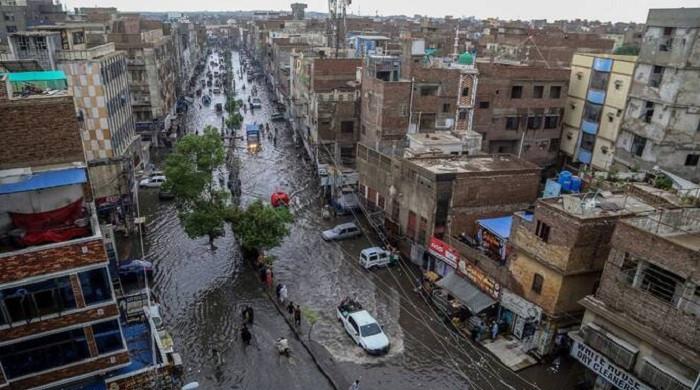Monsoon Floods Claim More Lives in Pakistan
Pakistan’s disaster management authority reported on Sunday that the ongoing heavy monsoons have caused at least 13 additional fatalities in rain and flood-related incidents over the past 24 hours.
According to the National Disaster Management Authority (NDMA), these recent deaths have increased the total number of lives lost since June 26 to a minimum of 216.
The intense rainfall has led to both flooding and the collapse of buildings, with the majority of deaths resulting from the collapse of roofs in structurally unsound homes.
Twelve deaths were recorded in Punjab, and one occurred in Khyber Pakhtunkhwa. The NDMA stated that the deceased included four children and three women.
Punjab has reported 135 deaths, while KP has recorded 42, Sindh 21, Balochistan 16, and Islamabad and Azad Kashmir one each.
Tragically, 101 children have lost their lives since the start of this period of intense rainfall.
The NDMA indicated that most fatalities resulted from collapsing residences, flash floods, lightning, drowning incidents, and landslides.
Numerous families residing in vulnerable buildings had minimal protection when the heavy rains arrived.
To date, over 580 individuals have sustained injuries, with 20 of those injuries occurring in the last day. Among the injured are 227 men, 163 women, and 192 children.
The statement also mentions that almost 800 residences have been destroyed since the start of the rains. Furthermore, the losses of livestock are mounting, with almost 200 animals reportedly killed or swept away by floodwaters.
Rescue and aid operations are in progress, but disaster management officials have strongly advised citizens to exercise caution due to predictions of additional rainfall in the coming days, especially those residing in flood-prone or low-lying regions.
Monsoon rains are a typical feature of the South Asian climate, crucial for irrigating crops and replenishing water reserves.
However, the destructive impact of these rains has grown in recent years as a result of rapid urbanization, inadequate drainage infrastructure, and more recurrent extreme weather events linked to alterations in the climate.



Comments (0)
No comments yet. Be the first to comment!
Leave a Comment